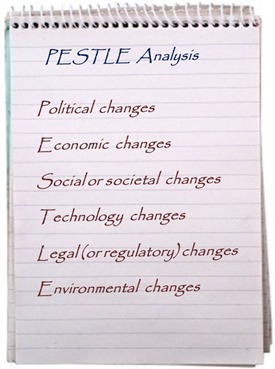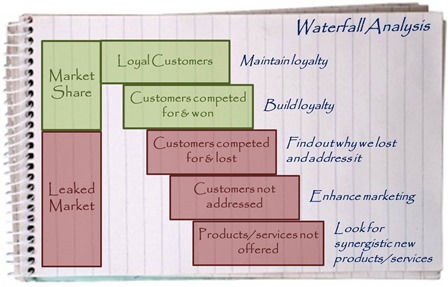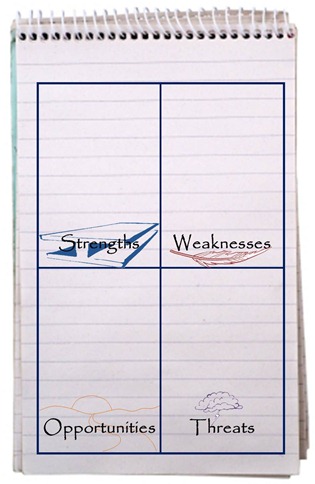Pocketblog has gone back to basics. This is part of an extended management course.
I used to be a director in a business where, like many businesses, once a year we would have a ‘strategy meeting’ to look at our strategy for the next year. How could we understand the market and what could we do to improve our competitive position. In the next blog, we will look at some of the more sophisticated strategy planning tools available to you. Here, I want to focus on three that have the overwhelming merit of simplicity.
Every year we would follow the same process… until, that is, until I got heartily sick of it and introduced another. But let’s start with the two tools that made up that much used process, before I offer you a powerful alternative that is guaranteed to give you insights into how your business can make more money.
SWOT Analysis
Perhaps the best known strategic analysis tool is SWOT Analysis – a structured review of your organisation’s Strengths, Weaknesses, Opportunities and Threats – often presented as a grid like this:

The secret to making SWOT Analysis work is frankness and a determination to be really objective about how your organisation measures up to the market. Being good at something is not a competitive strength if your competitors are also good at it – or even better.
The hardest part is to understand what is coming over the horizon by way of threats and opportunities. Because it is when you pair up the top of the chart with the bottom that you start to see what strategic changes you need to make. So, how do you spot opportunities and threats?
PESTLE Analysis
Of all the tools for horizon scanning, PESTLE analysis is the simplest. We just take stock of all of the changes we can foresee under a range of headings:
Waterfall Analysis
When you get bored with these, focus on revenue. Waterfall Analysis splits your entire market into your market share and the market share you leak to your competitors. It further subdivides these to give five components and hence five parts to your strategy. It will not give you the answers, but it will focus your thinking. People who have used this for a first time often find it leads to revelatory ‘aha moments’; so why not give it a try?
Click on the figure to enlarge it

From the Management Pocketbooks series:




